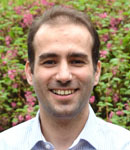Whilst there is still a grey area over whether printed materials should be placed in the mouth, dental schools are realising that 3D printed material can be very useful within a clinical skills environment. Leeds Dental Institute and Queen Mary University London have significant expertise in this respect and are in the process of developing a range of 3D printed objects to use as teaching materials.
In April 2016 I was awarded an ERDP Development Grant to visit Leeds to see what they are doing and scope out the potential for developing a 3D printing facility here at Newcastle School of Dental Sciences.
During my visit, I met clinical teaching staff and discussed the potential use of 3D prints of tailored tooth models for preclinical courses and postgraduate courses.
What they use in Leeds is as follows:
- A desktop scanner was used for the scans.
- The desktop printer has a resin tank with voxel size of 50 micrometre, “which is fit for purpose”. These are in the range of £ 3K to 5K. These printers can print objects of 10X10X10 cm.
- The material is laser set with supporting print material that is laid during the powder deposition and could be cleaned using isopropanol. This allows 3D printing of the internal structures in addition to the outer shape which is important when talking about tooth structure.
- The length of a print will depend on the size of the aimed print. But roughly between three hours for a small one to an overnight for bigger samples.
- In terms of the toughness of the material used, it was difficult to produce objects with more than one toughness properties.
- Regarding the surface smoothness and roughness, the produced objects will not look as shiny as the Frasaco™ teeth, as the latter ones are injection made and are polished. 3D print surface roughness will depend on the resolution (for both the scan and the print out).
The potential for 3D printing as a teaching resource is great. 3D printers can be used to reproduce dentures from a previous scan taken at the fitting time. These printers can also be used to produce Michigan splints. Temporary crowns and restorations can be made but need an intra-oral camera to capture the prepared teeth in a format that the software can deal with. We are not milling prosthetics here, we are 3D printing them.
Following on from my study visit to Leeds, my plan is to apply for funding to buy a printer with similar technical specifications and to have a collaboration with Leeds/QMUL on educational research, internal dissemination on uses of 3D printing, and the scanned data.
I’d like to thank the ERDP for funding this piece of investigative work.
Iad Gharib, School of Dental Sciences

